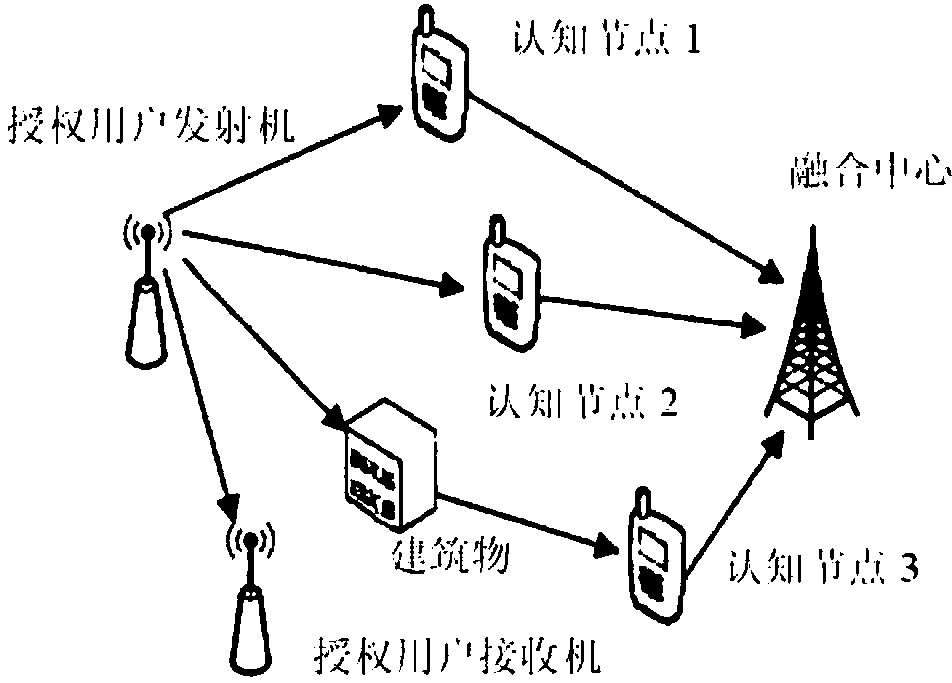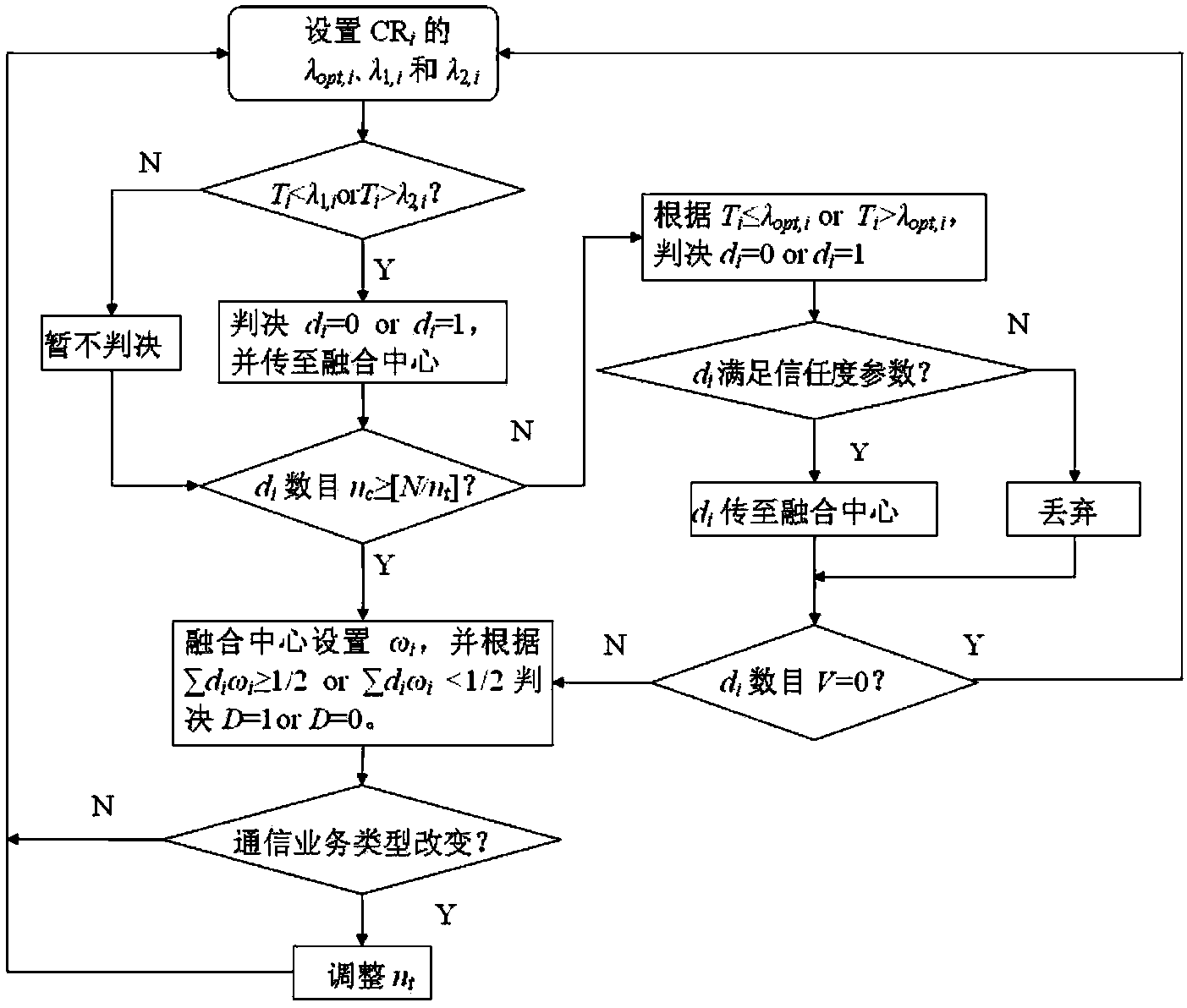Double-threshold collaborative frequency spectrum perception method based on trust degree
A cooperative spectrum sensing and cooperative sensing technology, applied in the field of computer wireless communication, can solve problems such as increased sensing delay, sensing failure, affecting channel congestion and sensing delay, and achieves the effect of avoiding channel congestion
- Summary
- Abstract
- Description
- Claims
- Application Information
AI Technical Summary
Problems solved by technology
Method used
Image
Examples
Embodiment Construction
[0022] The present invention will be further described in detail below in conjunction with the accompanying drawings of the specification.
[0023] Such as figure 2 As shown, the method of the present invention includes the following steps:
[0024] Step 1: Set dual thresholds for cognitive nodes; by constructing CR i The effective use function U i (λ i ) And solve its maximum value, which is the optimal single threshold λ opt,i , And set the adaptive dual threshold λ on this basis 1,i And λ 2,i .
[0025] Step 2: The cognitive node performs local energy detection independently; if T i 1,i , Then the judgment d i =0; if T i > λ 2,i , Then the judgment d i =1, change d i To the fusion center to participate in collaborative perception; if λ 1,i ≤T i ≤λ 2,i , No judgment for the time being.
[0026] Step 3: If n c ≥[N / n t ], then discard all those in λ in step 2 1,i ≤T i ≤λ 2,i Node in; where n c Represents the number of cognitive nodes that sent local detection results to the fusion cen...
PUM
 Login to View More
Login to View More Abstract
Description
Claims
Application Information
 Login to View More
Login to View More - R&D
- Intellectual Property
- Life Sciences
- Materials
- Tech Scout
- Unparalleled Data Quality
- Higher Quality Content
- 60% Fewer Hallucinations
Browse by: Latest US Patents, China's latest patents, Technical Efficacy Thesaurus, Application Domain, Technology Topic, Popular Technical Reports.
© 2025 PatSnap. All rights reserved.Legal|Privacy policy|Modern Slavery Act Transparency Statement|Sitemap|About US| Contact US: help@patsnap.com



